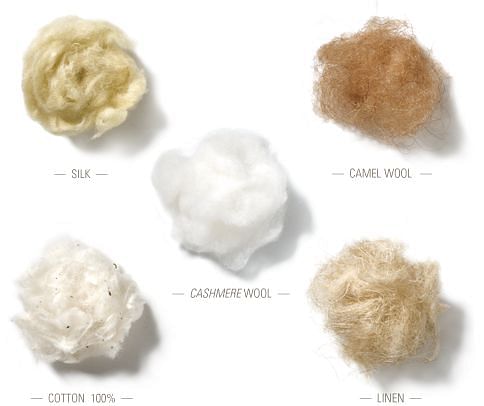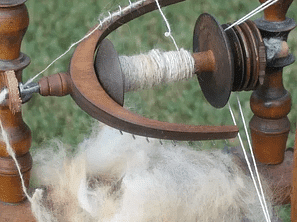NCERT Solutions for Class 6 Science - Fibre to Fabric
Q1: Classify the following fibres as natural or synthetic: nylon, wool, cotton, silk, polyester, jute.
Ans: Natural Fibres: Wool, cotton, silk, jute.
 Natural Fibres
Natural Fibres
Synthetic Fibres: Nylon, polyester.

Q2. State whether the following statements are true or false:
(a) Yarn is made from fibres.
(b) Spinning is a process of making fibres.
(c) Jute is the outer covering of coconut.
(d) The process of removing seed from cotton is called ginning.
(e) Weaving of yarn makes a piece of fabric.
(f) Silk fibre is obtained from the stem of a plant.
(g) Polyester is a natural fibre.
Ans:
(a) Yarn is made from fibres. (True)
(b) Spinning is a process of making fibres. (False)
(c) Jute is the outer covering of coconut. (False)
(d) The process of removing seed from cotton is called ginning. (True)
(e) Weaving of yarn makes a piece of fabric. (True)
(f) Silk fibre is obtained from the stem of a plant. (False)
(g) Polyester is a natural fibre. (False)
Q3. Fill in the blanks:
(a) Plant fibres are obtained from_________ and ________ .
(b) Animals fibres are __________ and ___________ .
Ans:
(a) Plant fibres are obtained from jute and cotton.
(b) Animals fibres are silk and wool.
Q4. From which parts of the plant cotton and jute are obtained?
Ans: Cotton is obtained from the fruits of the cotton plant, called cotton balls. Jute fibre is obtained from the stem of the jute plant.
Q5. Name two items that are made from coconut fibre.
Ans: Jute bags, ropes and Foot mats.
Q6. Explain the process of making yarn from fibre.
Ans: The process of making yarn from fibres is called spinning. In this process, fibres from a mass of cotton are drawn out and twisted. This brings the fibres together to form a yarn. Spinning is done at home using simple devices like hand spindle (Takli) and charkha. On large scale, big spinning machines are used.

|
26 videos|28 docs|9 tests
|
FAQs on NCERT Solutions for Class 6 Science - Fibre to Fabric
| 1. What is fibre? |  |
| 2. How is wool obtained from sheep? |  |
| 3. What is the difference between natural and synthetic fibres? |  |
| 4. How is silk obtained from silkworms? |  |
| 5. Why is it important to use sustainable and eco-friendly fibres? |  |
|
26 videos|28 docs|9 tests
|

|
Explore Courses for Class 5 exam
|

|


















